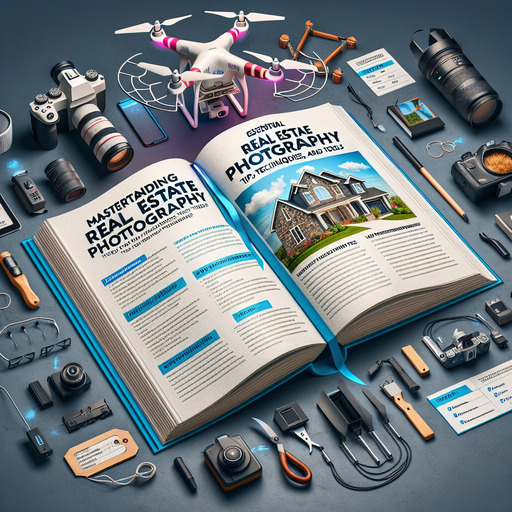
-
Table of Contents
- Mastering Real Estate Photography: Tips, Techniques, and Tools
- Understanding the Importance of Real Estate Photography
- Essential Real Estate Photography Tips
- 1. Invest in Quality Equipment
- 2. Master the Art of Lighting
- 3. Perfect Your Composition
- Enhancing Photos with Real Estate Photography Editing
- Real Estate Drone Photography: A Game Changer
- Pricing Your Real Estate Photography Services
- Conclusion
- Questions and Answers
- 1. What is the best time of day for real estate photography?
- 2. How can I improve my real estate photography skills?
- 3. Is drone photography necessary for all real estate listings?
Mastering Real Estate Photography: Tips, Techniques, and Tools
In the competitive world of real estate, first impressions are everything. High-quality real estate photography can make or break a property listing, influencing potential buyers’ decisions before they even step foot inside. This guide will explore essential tips, techniques, and tools to elevate your real estate photography game, ensuring your listings stand out in the crowded market.
Understanding the Importance of Real Estate Photography
Real estate photography is more than just snapping pictures of a property. It’s about capturing the essence and potential of a space, enticing buyers to envision themselves living there. According to the National Association of Realtors, 87% of home buyers found photos to be the most useful feature of online listings. This statistic underscores the critical role photography plays in real estate marketing.
Essential Real Estate Photography Tips
1. Invest in Quality Equipment
Having the right equipment is crucial for capturing stunning real estate photos. Consider investing in:
- Camera: A DSLR or mirrorless camera with a wide-angle lens is ideal for capturing spacious interiors.
- Tripod: Ensures stability and allows for longer exposure times, which is essential for low-light conditions.
- Drone: For aerial shots that provide a unique perspective of the property and its surroundings.
2. Master the Art of Lighting
Lighting can dramatically affect the quality of your photos. Here are some lighting tips:
- Natural Light: Shoot during the day when natural light is abundant. Open curtains and blinds to let in as much light as possible.
- Artificial Light: Use additional lighting equipment like softboxes or reflectors to fill in shadows and create a balanced look.
3. Perfect Your Composition
Composition is key to creating visually appealing photos. Consider these techniques:
- Rule of Thirds: Divide your frame into thirds, both horizontally and vertically, and place key elements along these lines.
- Leading Lines: Use architectural lines to guide the viewer’s eye through the photo.
Enhancing Photos with Real Estate Photography Editing
Post-processing is an essential step in real estate photography. Editing can enhance colors, correct exposure, and remove unwanted elements. Popular software like Adobe Lightroom and Photoshop offer powerful tools for real estate photography editing.
Real Estate Drone Photography: A Game Changer
Drone photography has revolutionized real estate marketing by providing breathtaking aerial views of properties. This technique is particularly useful for showcasing large estates, waterfront properties, and unique architectural designs. Ensure you comply with local regulations and obtain necessary permits before using drones.
Pricing Your Real Estate Photography Services
Setting the right price for your services can be challenging. Consider factors such as equipment costs, editing time, and market demand. Research competitors’ pricing and adjust your rates accordingly to remain competitive while ensuring profitability.
Conclusion
Real estate photography is a powerful tool that can significantly impact the success of property listings. By investing in quality equipment, mastering lighting and composition, and utilizing editing software, you can create stunning images that captivate potential buyers. Embrace the latest trends, such as drone photography, to stay ahead in the market.
For more insights on real estate photography, check out this Wikipedia page on real estate photography.
Questions and Answers
1. What is the best time of day for real estate photography?
The best time for real estate photography is during the day when natural light is abundant. Early morning or late afternoon, known as the “golden hour,” provides soft, warm lighting that enhances the property’s appeal.
2. How can I improve my real estate photography skills?
Practice regularly, study professional real estate photos, and experiment with different techniques. Consider taking photography courses or workshops to enhance your skills and stay updated with industry trends.
3. Is drone photography necessary for all real estate listings?
While not necessary for all listings, drone photography can add significant value to properties with large estates, unique landscapes, or waterfront views. It provides a unique perspective that traditional photography cannot capture.
If you’re interested in learning more about our real estate photography services or have any questions, please contact us.